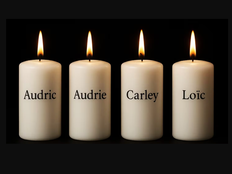'Jaws' turns 50: Dissecting the scariest two notes in film history

Article content
Reviews and recommendations are unbiased and products are independently selected. Postmedia may earn an affiliate commission from purchases made through links on this page.
Duhhhh-nuh.
Duhh-nuh.
Duh-nuh.
Duhnuh duhnuh duhnuh …
If you grew up with brothers and some form of pool access in the 1980s, you probably played Jaws.
Our version went something like this: One brother (the meal) treads water; another (the shark) swims around the depths of the deep end, waiting to strike; and a third (the bystander) supplies a live score to the unfolding catastrophe by chanting that menacing ostinato of duh-nuhs.
Steven Spielberg’s bitey nautical thriller and John Williams’s now-canonical two-note theme for it arrived in 1975, predating me by a year. Thus, “Jaws” has never not been in the proverbial water, and that accelerating succession of E and F has only ever meant one thing.
As the youngest brother/easiest target, I learned to use the theme as a radar of sorts, gauging from its volume and ramping tempo the shark’s location and, roughly, when to expect a pair of hands to drag you underwater. There was nothing to be done about it.
But while the attack was a foregone conclusion, the approach could go on indefinitely. The theme could toy with you, rather like a massive man-eating shark – leaving long silences between soundings, surfacing now and then like a hand mimicking a fin, swelling in volume and chomping staccato and GULP.
When it comes to film music, there may be no bigger fish than Williams’s theme – or perhaps no bigger hook.
The “Main Title” music from “Jaws” has inspired generations of commercial and cultural riffs and rip-offs – since filed under a larger surge of “Jaws”-inspired content termed “sharksploitation” – that have dulled its bite a bit. Low strings sounding minor seconds have been used to hawk everything from household bleach to shredded wheat to Hostess cupcakes and more. (Even Spielberg has deployed it satirically, by way of Robert Zemeckis, when “Back to the Future Part II” predicted a 2015 release for “Jaws 19.”)
But this overuse only underscores how effective the theme is at conjuring a very personal type of regrettable situation – the lapping wave of its single semitone repeating like a hex. It’s music that makes you prey.
What is it that makes the “Jaws” theme so scary?
Certainly, its inspirations can tell us something about its nature. Its low, toothy sawing grows violent and musically gory, not unlike the stabbing strings Bernard Herrmann wielded in his score for “Psycho,” and not so distant from the wilder episodes in Stravinsky’s “Rite of Spring.” (And while not directly lifted, there’s enough of an echo of “Jaws” in Prokofiev’s “Battle on the Ice” that I would hop out of the water if someone popped it on during a pool party.)
To get an idea of how the theme functions within the musical universe Williams created for “Jaws,” listen to “Finding the Orca,” the main title theme for “Jaws 2” (the only sequel he scored). Its surface glimmers with unsettling harps, searching oboe and squinting flutes – there’s more than a little bit of Debussy in this painting of tranquil waters awaiting disturbance. The threatening reappearance of the theme is a disruption of the beautiful – and an intrusion of the inevitable.
The strength of the theme is in its simplicity: It’s a fast-moving beast with one purpose. The sound could be the body of the shark itself, wagging and weaving through the water. It could be a measurement of dwindling time. Its two notes could represent the tension between hunter and hunted, or the dichotomy of life and death. Or it could be a stand-in for shark-speech: “Hey, you. Yes, you. You’re next.”
Or it could be the claustrophobic effect of its compositional economy, which inspired its own lineage of film scores. It’s hard to think of “Jaws” without thinking of John Carpenter’s ice pick piano theme for “Halloween,” a melody that glances nervously around every corner. Similarly, it’s hard to hear “Jaws” without feeling some attendant dread – its melody circles, incomplete, with just one possible resolution.
For his 1999 erotic thriller “Eyes Wide Shut,” Stanley Kubrick wicked a similar sense of entrapment from the second movement of György Ligeti’s “Musica Ricercata” (composed between 1951 and 1953). There, he favored a slightly more grating shift between F and F-sharp, rendered as a palindrome and affording the illusory extra breathing room of a mirror.
Kubrick employed Ligeti’s theme to evoke the spiking blood pressure of one suddenly screwed. But like Williams’s theme for “Jaws,” its unaccommodating rigidity also captures the stress of survival, the reduction of consideration into instinct.
More recently, and to more heroic effect, composers Hans Zimmer and James Newton Howard stretched a two-note theme across three installments of Batman films. To wit, Zimmer attempted to scale things down even further when depicting the Joker but came up short. “I really wanted to do the whole thing just with one note,” he told an interviewer on KCRW in 2009. “I failed slightly. I had to use two notes in the end.”
The “Jaws” theme lives on, though more as a meme than anything else – a constant, ever-diminishing reference to itself. And I imagine part of this is because the music remains as an artifact of a very particular type of engagement with the movies.
In the heyday of the megaplex, in the dark of a crowded theatre with long lines and sticky floors, I remember the shark having an almost physical presence. It could have been curling around the aisles, sneaking past our feet and knocking over our sodas.
Back in 1983, watching the subpar “Jaws 3-D” through my fingers and the special specs they handed out, I recall a room full of strangers squealing in relief when we were spared for some sap on-screen. And even though the score to the second sequel was composed by Alan Parker, Williams and his two-note calling card trail the film like a shadow under a boat.
After all, “Jaws” has no teeth without the music – a theme that catches you by the ears and drags you by the ankles.











Postmedia is committed to maintaining a lively but civil forum for discussion. Please keep comments relevant and respectful. Comments may take up to an hour to appear on the site. You will receive an email if there is a reply to your comment, an update to a thread you follow or if a user you follow comments. Visit our Community Guidelines for more information.